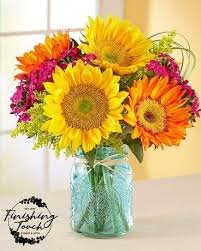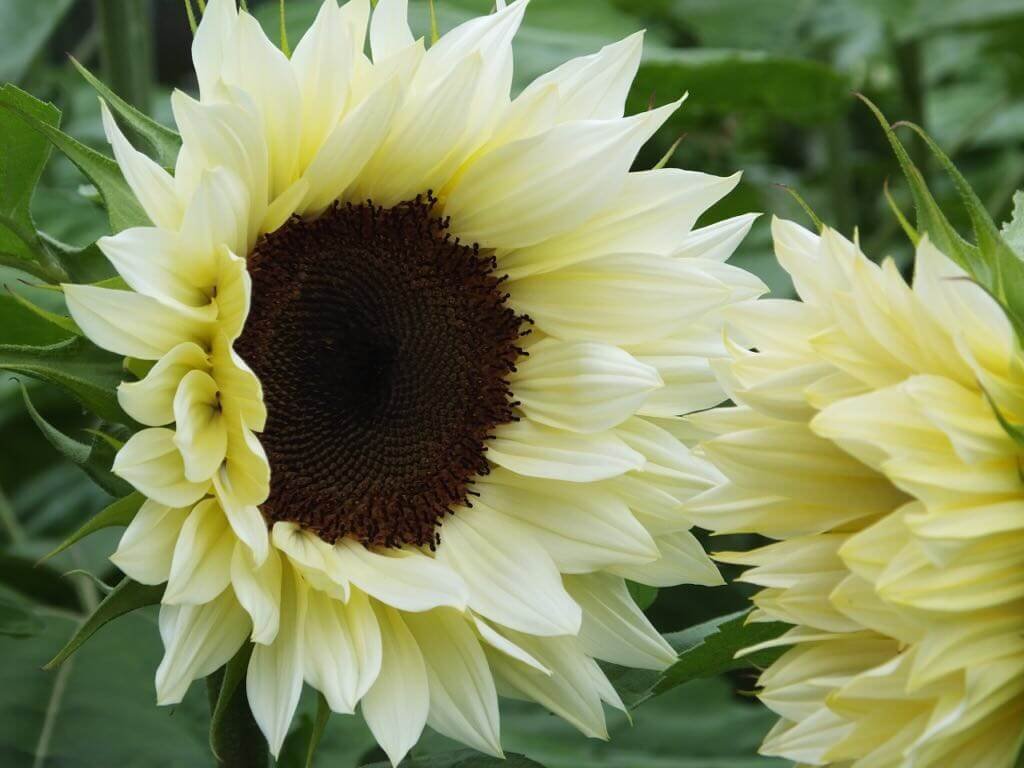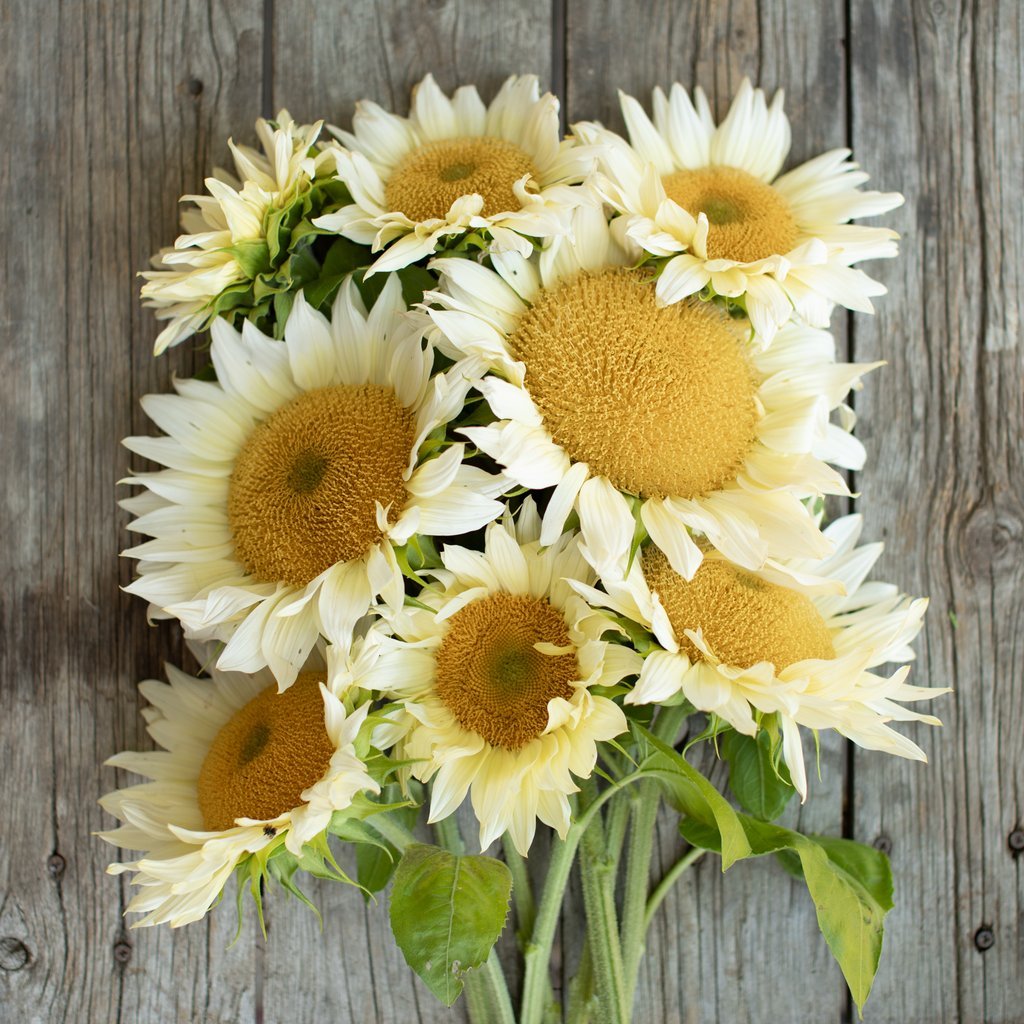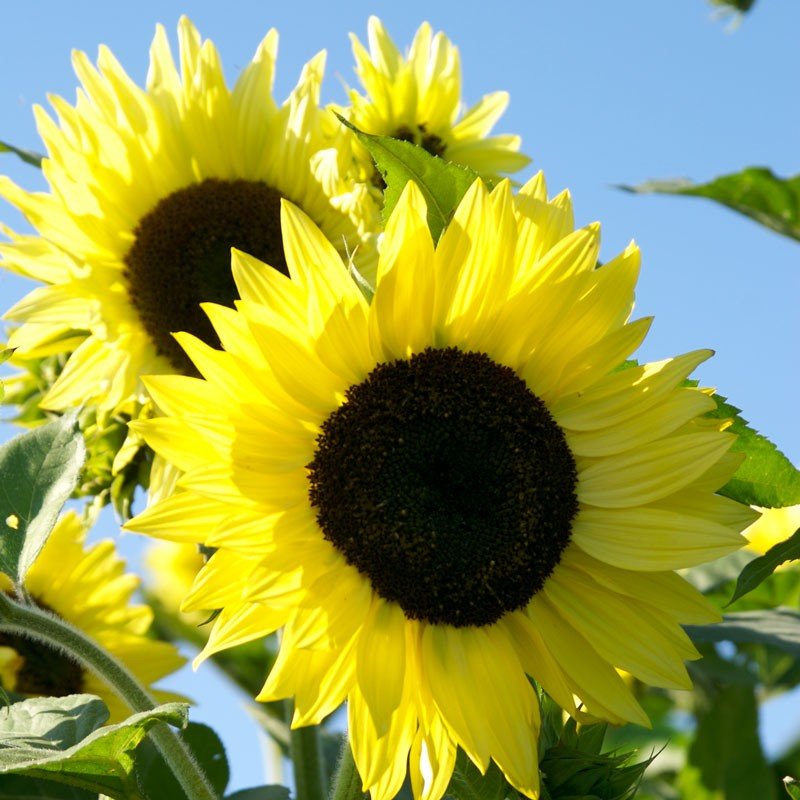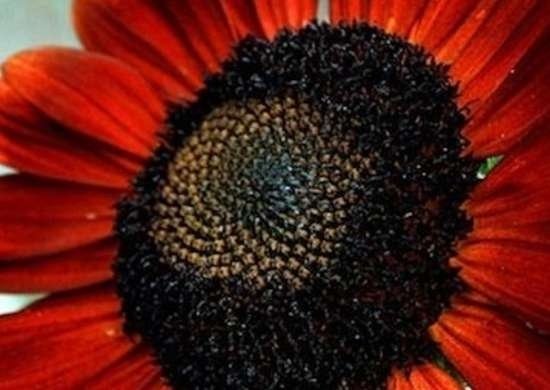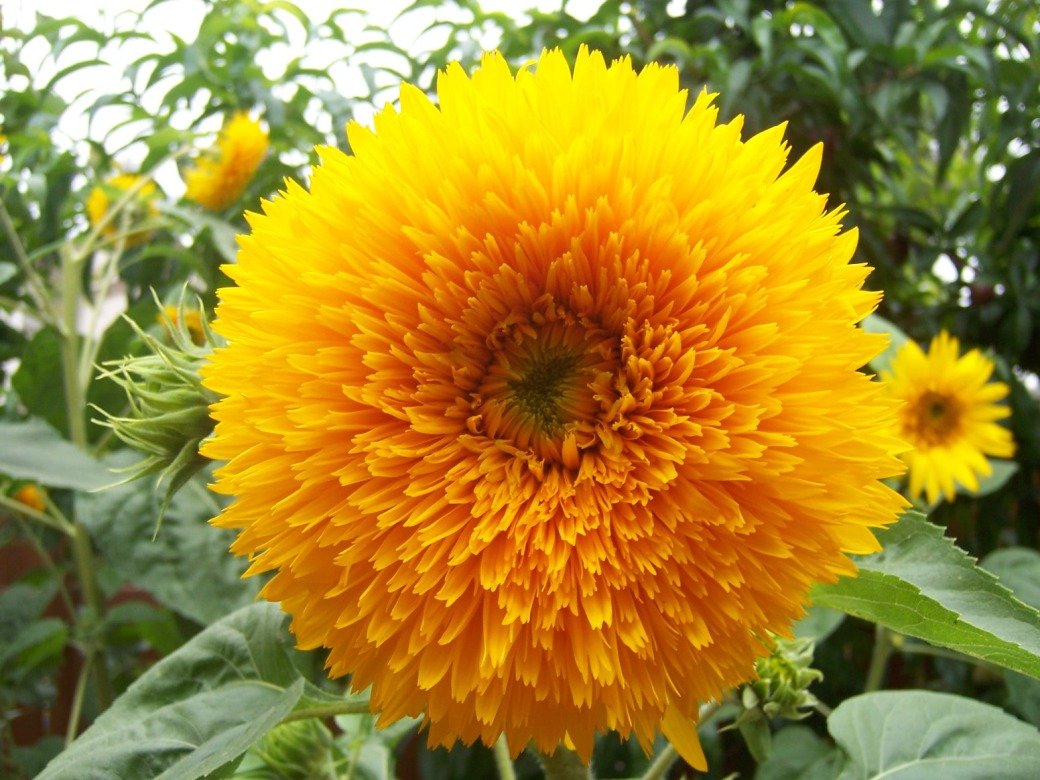Sunflowers: more than just yellow
Classic Sunflower
Sunflowers come in a variety of colors, sizes and shapes. Typically, we think of sunflowers as reaching sky high with golden petals and dark brown centers. Variety and fun describe today’s sunflowers.
Here are a few ways sunflowers can vary:
Color-Sunflowers can bloom in a variety of beautiful warm colors. The newer varieties of sunflowers can be white, light yellow, red, orange, or even green. The center or disk can be brown, dark brown, yellow, green, or orange/brown. Brides love white sunflowers with light yellow/brown centers.
Variegation-Sunflower variegation seems unlimited. Sunflowers mix beautiful yellow, reds, golds, whites and oranges into some breath-taking blooms. The centers are also varied. I love the flowers with dark brown centers, with rich burgundy petals that shift to lemon and gold hues on the tips. These variegated flowers are beautiful in an arrangement accented with solid gold sunflowers and solid red sunflowers.
Size- Sunflowers varieties can range as tall as 7-8 feet or dwarf size at 10-15 inches. Besides buying a special variety for a certain height, you can plant seeds closer together and get a smaller plant. Kate plants the sunflowers with an old 4 row corn planter that can adjust the seed spacing.
Flower shape- Flower heads can be the traditional single bloom or a double blooming variety that looks like a mass of petals around the center. An example of a full double bloomer is the Teddy Bear Sunflower. These sweet flowers are very popular with children.
Branching- The classic sunflower is a single stem with one flower. These varieties are ideal for cut flowers. Branching sunflowers produce many side stems and flowers off the main stalk. They have thinner side branches with multiple smaller flowers.
Fragrance- Some of the newer varieties have a mild chocolate smell (Florenza (A)- Johnny’s Seeds). Choclate and flowers all in one!
Pollenless- The classic sunflower produces pollen, develops seeds and attracts birds and pollinators. The shedding pollen can be a drawback for a flower arrangement. Pollenless sunflowers do not shed pollen. The seeds are empty, and the birds quickly learn your flowers are only for show! Plant the sunflower that best meets your needs.
Sunflowers grow the best when directly planted into the soil after the last frost in the spring. Our typical last frost is around the first or second week of May. We live in zone 5. Plant seeds about 1/2 inch deep. Pinch the branching varieties to encourage branching and longer stems. Good luck with your garden adventures in 2024.



